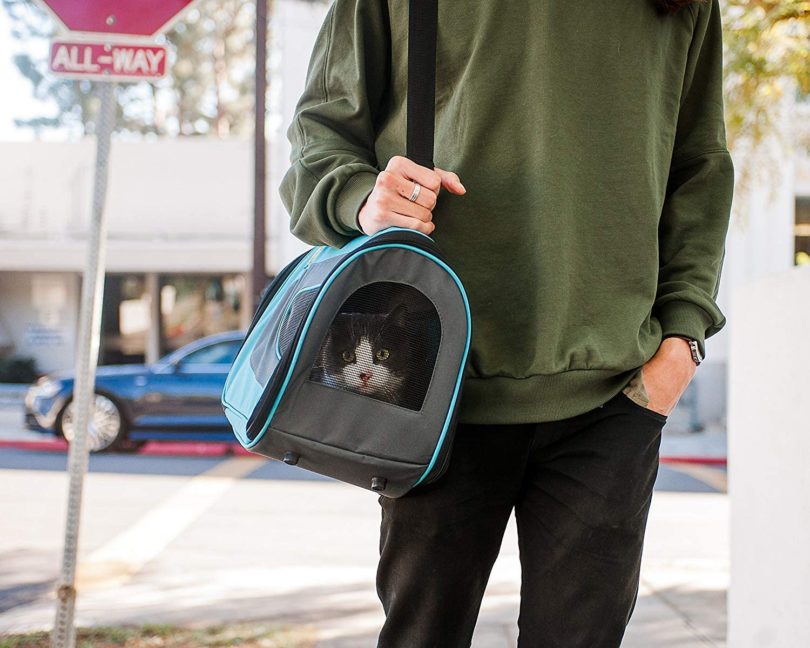Many people tend to have periods of high amounts of anxiety or stress. For these individuals, traditional forms of treatment, such as medication and therapy, may not be enough. In some cases, an emotional support animal may be prescribed as an additional form of support. Recently, there has been a significant rise in the number of people claiming they need an emotional support animal to cope with their mental health.
The definition of an emotional support animal is a companion animal that provides therapeutic benefit to an individual with a mental or psychiatric disability. There is no definitive list of emotional support animals, but the most common examples include dogs, rabbits, horses, birds, and yes—cats.
What Is an Emotional Support Animal?
Much of the information in this article is geared toward individuals residing in the U.S. It’s best to seek up-to-date legal information and guidelines from relevant authorities in your area of residence if you’re considering an emotional support animal.
Emotional support animals work specifically with individuals who suffer from mental illnesses. They are able to perform tasks such as recognizing signs of distress, providing comfort, or watching over the unwell person. These animals are not required to have any specific training but are typically used to provide comfort and companionship to those suffering from anxiety, depression, bipolar disorder, and other mental health conditions. People suffering from mental illness may benefit from the presence of an emotional support animal. Individuals who qualify have mental health conditions that disrupt their daily lives, such as anxiety disorders, panic disorders, or clinical depression.

Can a Cat Be an Emotional Support Animal?
The classification of an emotional support animal is not concrete. Within the U.S., a cat can legally be considered an emotional support animal. Some would say that because cats are not as emotionally dependent on humans as dogs are, they cannot be considered emotional support animals. Others may argue that the bond between a cat and their human can be just as strong, making them viable candidates for emotional support animal status.
Ultimately, it is up to the discretion of the individual to assess whether a cat can be classified as an emotional support animal. As with any emotional support animal, cats can provide love, empathy, and encouragement. If you’re not a “cat lover,” you may not realize that a cat’s loyalty can be as unconditional as a dog’s. In addition to that, many mental health professionals report that cat ownership has just as many positive effects as dog ownership.
Why Do Cats Make Great Emotional Support Animals?
There are a few reasons that cats make great emotional support animals. For one thing, they are good at providing companionship, and studies1 have shown that owning a cat can reduce stress levels and promote better mental health. Felines also provide physical affection by rubbing against people and purring, which may help some individuals with their stress levels.
In cat behavioral studies, cats are shown to spend more time with people who are agitated2 or depressed3, which might be welcomed by those suffering from such issues.

Are Cats or Dogs Better Emotional Support Animals?
Some people may feel that cats are better emotional support animals than dogs. Others may find that dogs are better at providing emotional support. Ultimately, it comes down to the individual’s preference and what animal they feel most comfortable with.
How Do I Register My Cat as an Emotional Support Animal?
Although it is not required by law to register your feline as an emotional support animal, some people choose to do so for its many benefits. These include having access to custom ID cards, certificates, and even vests to identify the cat as an emotional support animal.
However, the legal requirement for an emotional support animal only involves a letter from a licensed health practitioner in your state that says that you benefit from your cat’s companionship. With this documentation, your cat will be a legal emotional support animal.
If you are within the U.S., you may register your cat as an emotional support animal on their official website.

How Do I Qualify for an Emotional Support Cat?
To qualify for an emotional support cat, a person must first be diagnosed with a mental or psychiatric disorder by a licensed mental health professional in their state. The professional may then offer a supporting letter to the patient if they feel that they may benefit from an emotional support animal.
How Do I Make My Cat an Emotional Support Animal?
To determine if your cat can serve you as an emotional support animal, you should speak with a professional. An emotional support cat must be prescribed by a mental health professional to help alleviate the symptoms of a diagnosed disorder.

How Should the Letter Be Written?
Emotional support animals are often included in databases, but this is not a strict requirement by law. Any request for an emotional support animal must be accompanied by a letter from a certified mental health professional. In order to be successfully accepted, this letter should look and be legitimate. The letter must be on professional letterhead and written by a qualified physician or mental health professional. The letter should include the license number of the provider, their signature, and the date on which it was signed. It must also include a clear explanation of why you need an emotional support animal.
Can I Make My Cat an Emotional Support Animal Without a Mental Health Provider?
In the U.S., your animal cannot be registered or considered an emotional support animal without the input of a licensed mental health professional in your state. You can’t write this letter yourself. If you do, it will have serious consequences.

What Should I Do Once I Have My Letter?
Once your licensed mental health professional has completed a letter documenting your diagnosis and your cat’s emotional support animal status, be sure to keep your letter on hand when you need it. When you are flying with your animal or looking for a place to stay, it may be requested.
Are Emotional Support Cats Still Pets?
Yes, an emotional support cat is still considered your pet. They do not have the legal rights that service animals have in the U.S. Cats cannot be registered as service animals within the U.S. either.

Do Emotional Support Cats Enjoy Any Legal Privileges?
Support animals are the subject of two federal laws in the United States. Although the benefits and protections accorded to emotional support cats aren’t as extensive as those granted to service animals, there are still two factors to be taken into consideration. In terms of rights, emotional support animals only have travel and housing privileges.
Pets with emotional support status are allowed to travel by plane without a carrier, and this status also applies within a rental property that would exclude other pets.
The Air Carrier Access Act (ACAA)
The ACAA exempts you from paying an additional fee when you travel with your emotional support cat. The airlines must also be notified in advance and receive a recent (less than 1 year old) supporting letter from a licensed mental health professional for the emotional support cat. Before booking, it’s best to review flight information carefully to ensure you meet your airline’s pet policy.

The Fair Housing Act (FHA)
The FHA helps make living with your cat easier by ensuring that individuals who require an emotional support cat will be granted reasonable accommodation and can live with their pet. It also prevents landlords and rental companies from being able to charge pet deposits and fees to tenants.
Since the FHA applies to colleges, emotional support animals, such as cats, are permitted on university campuses. Do keep in mind that the university will ask for your emotional support animal letter.
What Are the Differences Between an Emotional Support Animal & a Service/Therapy Animal?
An emotional support animal is not trained to perform tasks like service animals, but they may provide significant therapeutic benefits to their owners. For example, people with depression might feel less isolated and alone if they have an emotional support animal.
A service animal is an animal trained to assist people with disabilities. People with physical disabilities, such as the blind or deaf, can benefit from them. Restaurants, hospitals, and stores allow service animals. A therapy animal is a pet that provides comfort and support to people experiencing emotional or psychological difficulties. Hospitals, nursing homes, and schools use these animals to reduce stress levels and encourage socialization. Therapy animals can be any kind of pet, but they tend to have a calm temperament and be good with people.
An emotional support animal is somewhere in between a service animal and a pet. They provide incredible benefits, so they do enjoy some legal rights if they have the right documentation.

Where Can I Take My Emotional Support Cat?
There are a number of laws regarding where you can take a service animal. Unfortunately, that doesn’t apply to emotional support cats. It is no longer a requirement for airlines to transport them in passenger cabins, though they must be carried free of charge. They are also not automatically permitted in restaurants, movie theaters, or shopping malls.
How Do You Train an Emotional Support Cat?
As far as the law is concerned, emotional support cats are not required to undergo any special training. However, in shared spaces, they should remain calm and well-behaved. They should also be litter trained.
Can Cats Be Service Animals?
Service animals are dogs that are individually trained to do work or perform tasks for people with disabilities, as defined by the American Disability Act. There is a special provision for miniature horses, but no mention is made of service cats.

Conclusion
If you are in need of an emotional support cat, the best way to accomplish this is to visit your licensed mental health provider and have them provide you with the necessary paperwork. Emotional support animals provide a significant benefit for those suffering from mental or emotional disabilities, and with the correct documentation, you can have your furry friend fly with you for free and live beside you to better help with your condition.
Featured Image Credit: New Africa, Shutterstock
Contents
- What Is an Emotional Support Animal?
- Can a Cat Be an Emotional Support Animal?
- Why Do Cats Make Great Emotional Support Animals?
- Are Cats or Dogs Better Emotional Support Animals?
- How Do I Register My Cat as an Emotional Support Animal?
- How Do I Qualify for an Emotional Support Cat?
- How Do I Make My Cat an Emotional Support Animal?
- How Should the Letter Be Written?
- Can I Make My Cat an Emotional Support Animal Without a Mental Health Provider?
- What Should I Do Once I Have My Letter?
- Are Emotional Support Cats Still Pets?
- Do Emotional Support Cats Enjoy Any Legal Privileges?
- What Are the Differences Between an Emotional Support Animal & a Service/Therapy Animal?
- Where Can I Take My Emotional Support Cat?
- How Do You Train an Emotional Support Cat?
- Can Cats Be Service Animals?
- Conclusion














